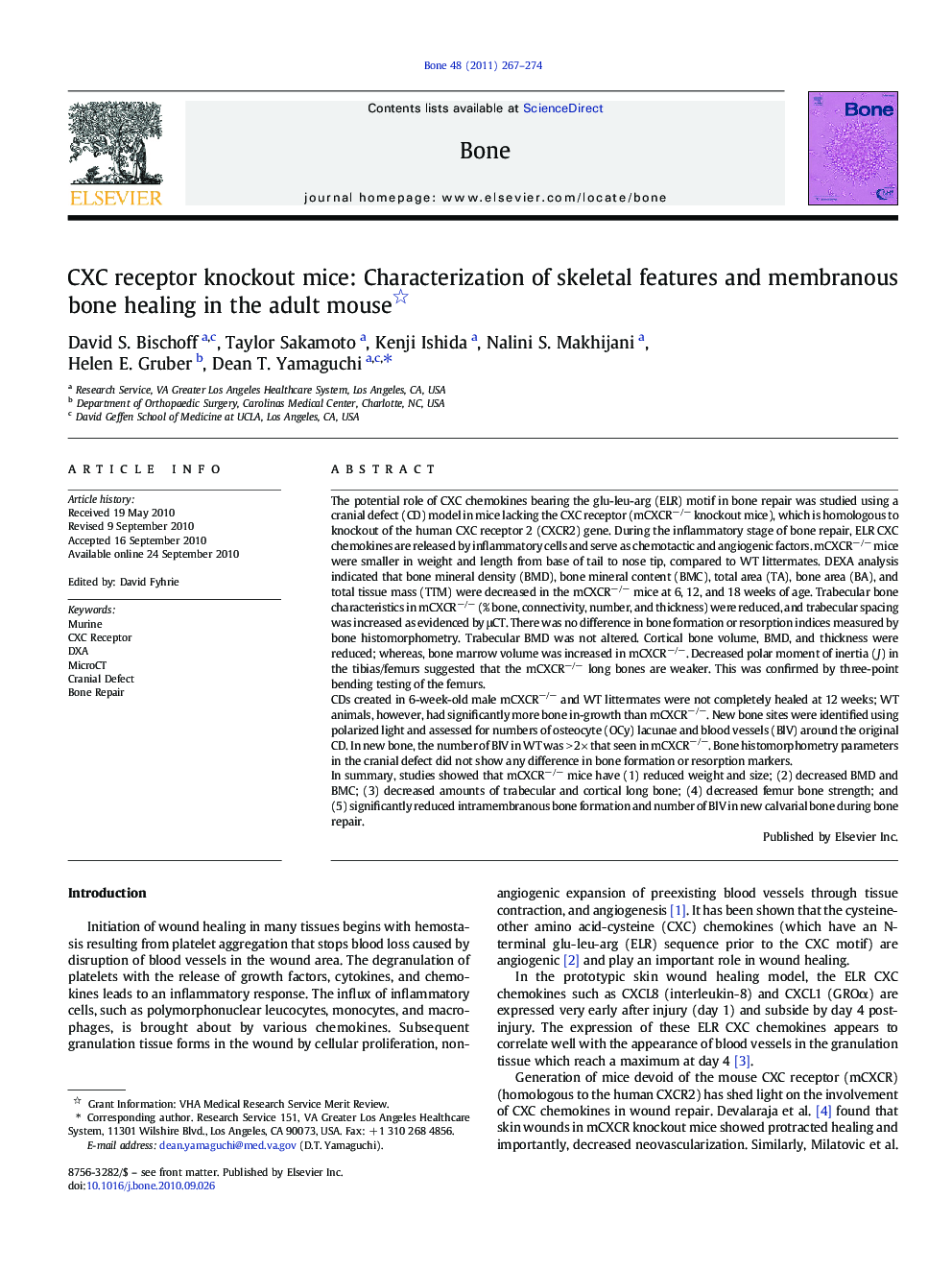| کد مقاله | کد نشریه | سال انتشار | مقاله انگلیسی | نسخه تمام متن |
|---|---|---|---|---|
| 2780470 | 1153299 | 2011 | 8 صفحه PDF | دانلود رایگان |

The potential role of CXC chemokines bearing the glu-leu-arg (ELR) motif in bone repair was studied using a cranial defect (CD) model in mice lacking the CXC receptor (mCXCR−/− knockout mice), which is homologous to knockout of the human CXC receptor 2 (CXCR2) gene. During the inflammatory stage of bone repair, ELR CXC chemokines are released by inflammatory cells and serve as chemotactic and angiogenic factors. mCXCR−/− mice were smaller in weight and length from base of tail to nose tip, compared to WT littermates. DEXA analysis indicated that bone mineral density (BMD), bone mineral content (BMC), total area (TA), bone area (BA), and total tissue mass (TTM) were decreased in the mCXCR−/− mice at 6, 12, and 18 weeks of age. Trabecular bone characteristics in mCXCR−/− (% bone, connectivity, number, and thickness) were reduced, and trabecular spacing was increased as evidenced by μCT. There was no difference in bone formation or resorption indices measured by bone histomorphometry. Trabecular BMD was not altered. Cortical bone volume, BMD, and thickness were reduced; whereas, bone marrow volume was increased in mCXCR−/−. Decreased polar moment of inertia (J) in the tibias/femurs suggested that the mCXCR−/− long bones are weaker. This was confirmed by three-point bending testing of the femurs.CDs created in 6-week-old male mCXCR−/− and WT littermates were not completely healed at 12 weeks; WT animals, however, had significantly more bone in-growth than mCXCR−/−. New bone sites were identified using polarized light and assessed for numbers of osteocyte (OCy) lacunae and blood vessels (BlV) around the original CD. In new bone, the number of BlV in WT was > 2× that seen in mCXCR−/−. Bone histomorphometry parameters in the cranial defect did not show any difference in bone formation or resorption markers.In summary, studies showed that mCXCR−/− mice have (1) reduced weight and size; (2) decreased BMD and BMC; (3) decreased amounts of trabecular and cortical long bone; (4) decreased femur bone strength; and (5) significantly reduced intramembranous bone formation and number of BlV in new calvarial bone during bone repair.
Journal: Bone - Volume 48, Issue 2, 1 February 2011, Pages 267–274